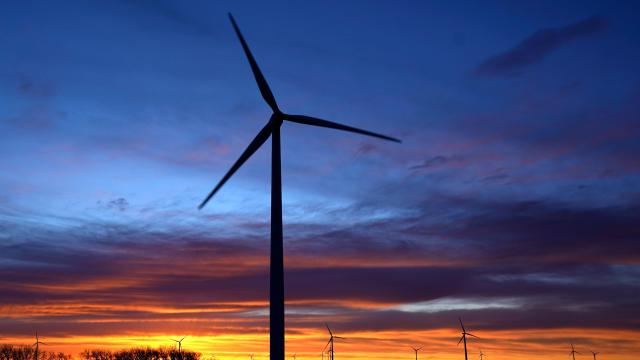What’s this? Some good news on the climate beat? In just one week, there were two encouraging triumphs for renewable energy in the U.S.: California’s grid briefly operated on nearly 100% renewable energy in early April, while wind power was the second-largest energy source nationwide on March 29.
First up, the encouraging news from the West Coast. California officials said in a statement last week that the state came close to running completely on renewable energy this month. At 3:39 p.m. on Sunday, April 3, the California Independent System Operator (ISO), a nonprofit that manages the grid, said that the grid was operating on 97.6% renewable sources. This breaks a record set just the week prior, when renewables made up 96.4% of the power supply.
One state may not seem like a lot to celebrate, but California is the fourth-largest electricity provider in the country. It’s also got some big climate goals: California is working to cut its greenhouse gas emissions 40% below 1990 levels by 2030 and to have a carbon-free electric grid by 2050.
“While these all-time highs are for a brief time, they solidly demonstrate the advances being made to reliably achieve California’s clean energy goals,” ISO CEO Elliot Mainzer said in the statement.
Nationally, there was another exciting renewable record set this spring. The U.S. Energy Information Administration reported last week that wind power was the second-largest source of electricity in the U.S. on March 29, coming in behind only natural gas. Wind turbines in the contiguous U.S. generated a whopping 2,017 gigawatt-hours (GWh) of electricity that day, comprising just over 19% of daily U.S. electricity generation.
This date marks the first time that wind energy surpassed both coal and nuclear capacity — which were at 19% and 17%, respectively, on March 29. Wind output had, on separate days, surpassed coal and nuclear separately, but never constituted enough power to outstrip both.
Part of this is because of the capacity factor — a measure of how much time an energy source is actually producing power — of wind versus nuclear energy. Nuclear plants are designed to run continuously, so their capacity factor is the highest of all energy sources; wind, on the other hand, can only provide energy when the wind is blowing. The fact that wind output matched the steady beat of nuclear energy is encouraging and signals that it can only get stronger to blow past dirty fuels like coal and gas.
In California, the ISO explained in its statement, renewables records are generally set in the spring, when mild temperatures and ample sunshine let wind and solar shine. Wind records, similarly, are unsurprising in March, one of the windiest months of the year. In the spring and fall, demand for power generally lets up as milder weather sets in, allowing renewables to take the lead over fossil fuels.
We’ve got a long way to go in totally electrifying our grid, including installing way more wind and solar resources, improving battery technology to store renewable energy, and keeping those reliable nuclear plants online to give carbon-free baseload power. But these little victories are a promising start.
